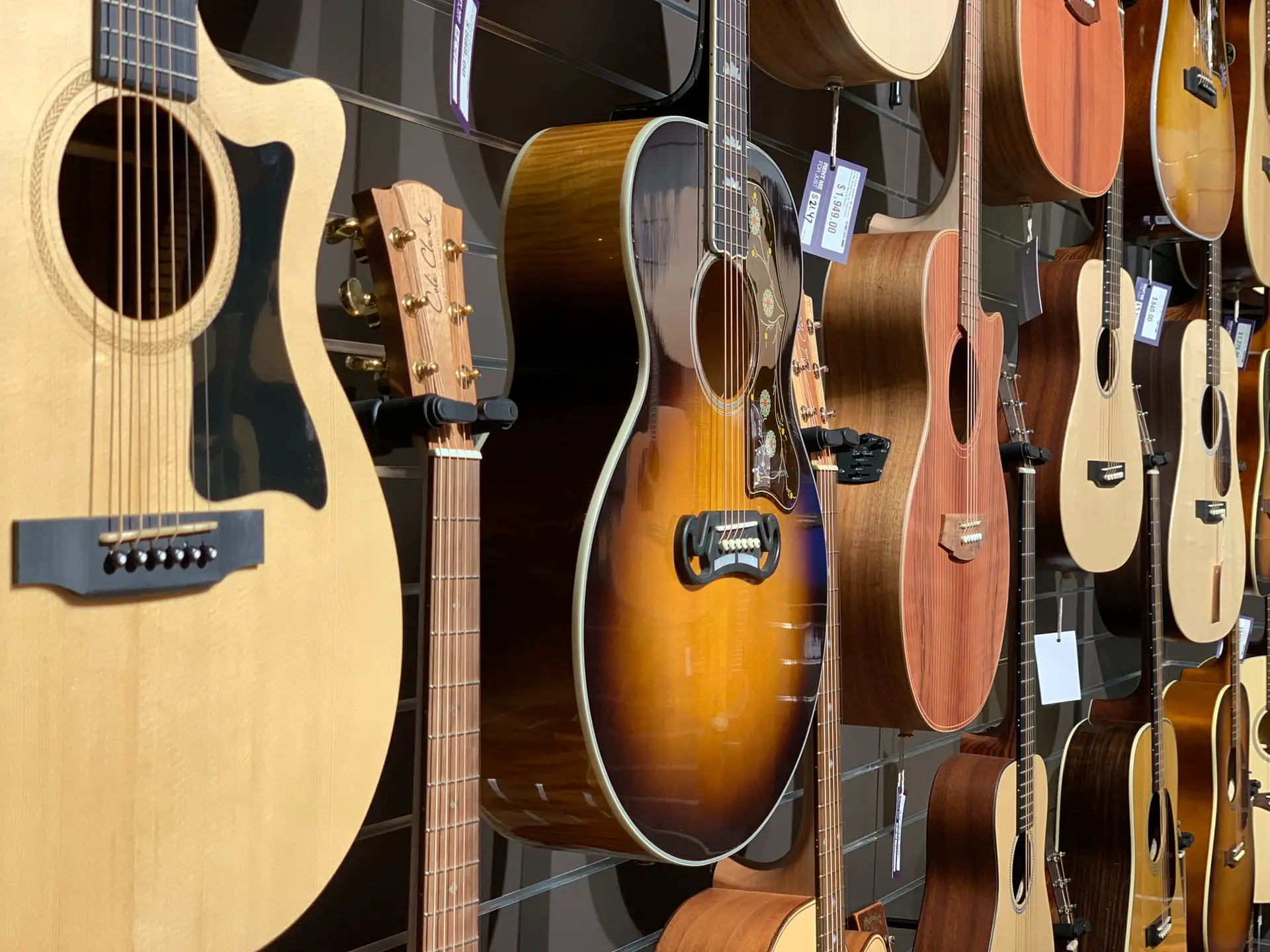The best wood for a guitar neck is typically determined by factors such as stability, tonal characteristics, and playability. One of the most commonly used woods for guitar necks is maple.
Maple is known for its strength and stability, which allows for better sustain and resonance. It also provides a bright and crisp tone with good articulation. Many electric guitars, especially those used for genres like rock and jazz, feature maple necks.
Another popular choice for guitar necks is mahogany. Mahogany necks are known for their warm and rich sound. They offer a smoother and more rounded tone compared to maple necks, making them a preferred choice for guitars used in blues, jazz, and heavier styles like metal.
Rosewood is another favored option, especially for acoustic guitars. It is known for its smooth texture and warm tone, which adds a touch of sweetness to the overall sound. It also offers excellent playability and is often used on high-end acoustic guitars.
Some other woods used for guitar necks include ebony, walnut, and basswood. Ebony necks offer a tight and focused tone with enhanced sustain, making them popular among metal and rock guitarists. Walnut necks provide a balanced tone with good sustain and are often used on bass guitars. Basswood necks are lightweight and offer a warm and balanced tone suitable for various music styles.
Ultimately, the best wood for a guitar neck depends on personal preference and the desired sound. It is always recommended to try out different neck materials and see which one suits your playing style and preference before making a final decision.
In my personal experience, I have found maple necks to be my preferred choice for electric guitars. The bright and articulate tone they provide complements the music styles I play. However, I also appreciate the warmth and richness of mahogany necks, especially when playing blues or jazz.
I have owned guitars with rosewood necks as well, and I appreciate the smooth texture and sweet tone they offer. Overall, I believe that the choice of wood for a guitar neck is crucial in achieving the desired playability and tone, and it is worth exploring different options to find the best fit for your musical preferences.
Also Read:
- Maple Magic: The Pros & Cons of This Tonewood for Your Guitar
- Is Rosewood A Good Tonewood? Uncovering The Pros & Cons!
- Alder Vs Mahogany Body: What’s Better? (Sound, Weight & Cost)
| Wood Type | Tonal Characteristics | Stability | Weight | Feel | Aesthetics |
|---|---|---|---|---|---|
| Maple | Bright, articulate | High stability | Lightweight | Smooth | Various finishes |
| Mahogany | Warm, rich | Moderate stability | Medium weight | Smooth | Attractive grain patterns |
| Rosewood | Smooth, warm, sweet | Moderate stability | Medium weight | Smooth | Visually appealing |
| Ebony | Tight, focused | High stability | Medium weight | Smooth | Classic and elegant |
| Walnut | Balanced | Moderate stability | Medium weight | Smooth | Interesting grain patterns |
5 Best Wood for guitar Neck
There are several woods that are commonly regarded as the best for guitar necks, each with its own unique characteristics and benefits.
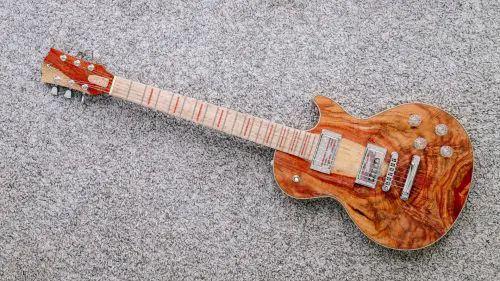
1. Maple: Maple is a popular choice for guitar necks due to its strength, stability, and bright tone. It offers a crisp and articulate sound with good sustain, making it ideal for genres like rock and jazz. Maple necks also have a smooth feel and can be finished in various ways, providing a comfortable playing experience.
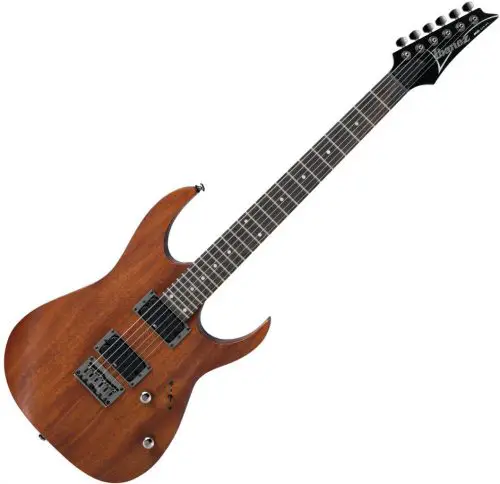
Mahogany guitar
2. Mahogany: Mahogany is known for its warm and rich sound. It offers a smooth and rounded tone, making it a preferred choice for blues, jazz, and heavier styles like metal. Mahogany necks also provide good sustain and resonance, contributing to a deep and full-bodied sound.
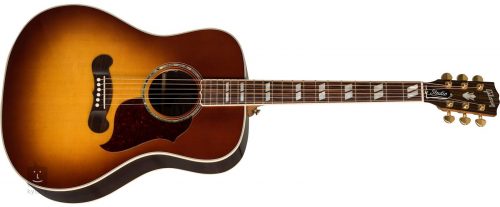
3. Rosewood: Rosewood is commonly used for acoustic guitar necks due to its smooth texture and warm tone. It adds a touch of sweetness to the overall sound and enhances the overall resonance of the instrument. Rosewood necks are often seen on high-end acoustic guitars and are highly valued for their playability and tonal qualities.
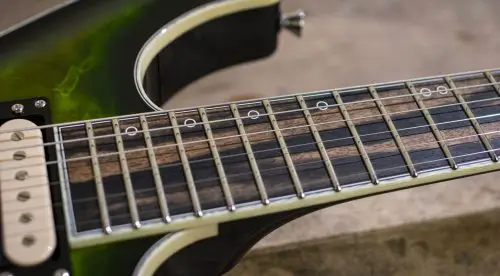
4. Ebony: Ebony necks are known for their tight and focused tone with enhanced sustain. They offer a crisp and clear sound, making them popular among metal and rock guitarists. Ebony is also a dense wood, providing stability and durability to the neck.
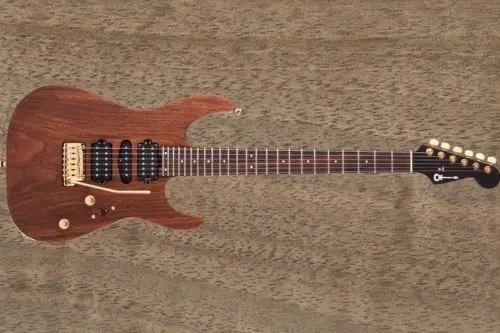
5. Walnut: Walnut necks provide a balanced tone with good sustain. They offer a warm and smooth sound and are often used on bass guitars. Walnut necks are visually appealing with their attractive grain patterns and are favored by players who seek a versatile and reliable option.
In my experience, I have found maple necks to be my personal preference for electric guitars. The bright and articulate tone they provide complements the music styles I play. Maple necks also offer excellent stability, which is important when using heavier gauge strings or playing in different climates.
However, I cannot deny the allure of mahogany and its warm tonal qualities. I have played guitars with mahogany necks and appreciated the silky smooth feel and rich sound it produces. Ultimately, the best wood for a guitar neck depends on individual preference and the desired sound, and it is always worth exploring different options to find the perfect fit for your playing style.
How does the neck wood affect the playability of a guitar?
Neck wood does affect playability of guitar in several ways:
- Density and Balance: Neck wood’s density affects guitar weight and balance. Light woods like maple provide comfort, while denser options like mahogany offer stability and sustain.
- Stability and Resistance: Neck wood choice influences guitar’s stability against temperature and humidity changes, preventing warping. Maple excels in stability.
- Tactile Experience: Different wood textures influence hand glide. Smooth rosewood feels luxurious; satin-finished maple enhances speed and ease.
- Tonal Contribution: Neck wood impacts guitar tone and resonance due to vibration transfer. Maple offers brightness; mahogany delivers warmth and richness.
5 Factors to consider when choosing a guitar neck wood
- Tonal Characteristics: Different woods offer distinct tones – maple for brightness, mahogany for warmth. Choose based on your music genre and desired sound.
- Stability and Durability: Consider wood’s stability against warping. Maple and ebony are reliable choices, especially for diverse climates or touring.
- Weight and Balance: Neck wood impacts guitar balance and comfort. Light woods like maple or basswood suit extended playing sessions.
- Feel and Texture: Neck feel varies – smoother for speed, rougher for grip. Test different woods to find the most comfortable fit for your hands.
- Aesthetics and Appeal: Some woods boast beautiful grain patterns, enhancing the guitar’s look. A visually appealing neck wood can boost your instrument’s allure.
Summary
In conclusion, when it comes to choosing the best wood for a guitar neck, there is no one-size-fits-all answer. It all depends on your personal preference, playing style, and the sound you’re aiming for. Maple offers bright tones and stability, mahogany provides warmth and richness, while rosewood adds sweetness and resonance. Ebony offers tight focus, and walnut provides balance.
Consider factors like tonal characteristics, stability, weight, feel, and aesthetics when making your decision. Don’t forget to try out different neck woods to determine which one feels most comfortable and natural in your hands. Remember, the neck wood plays a vital role in the playability, tone, and overall feel of the guitar.
Ultimately, finding the perfect wood for your guitar neck is like finding the perfect match for your playing style – it may take some time, experimentation, and personal exploration. So go out there, unleash your inner musician, and let the right wood guide you to creating the sounds that inspire you. Happy playing!


